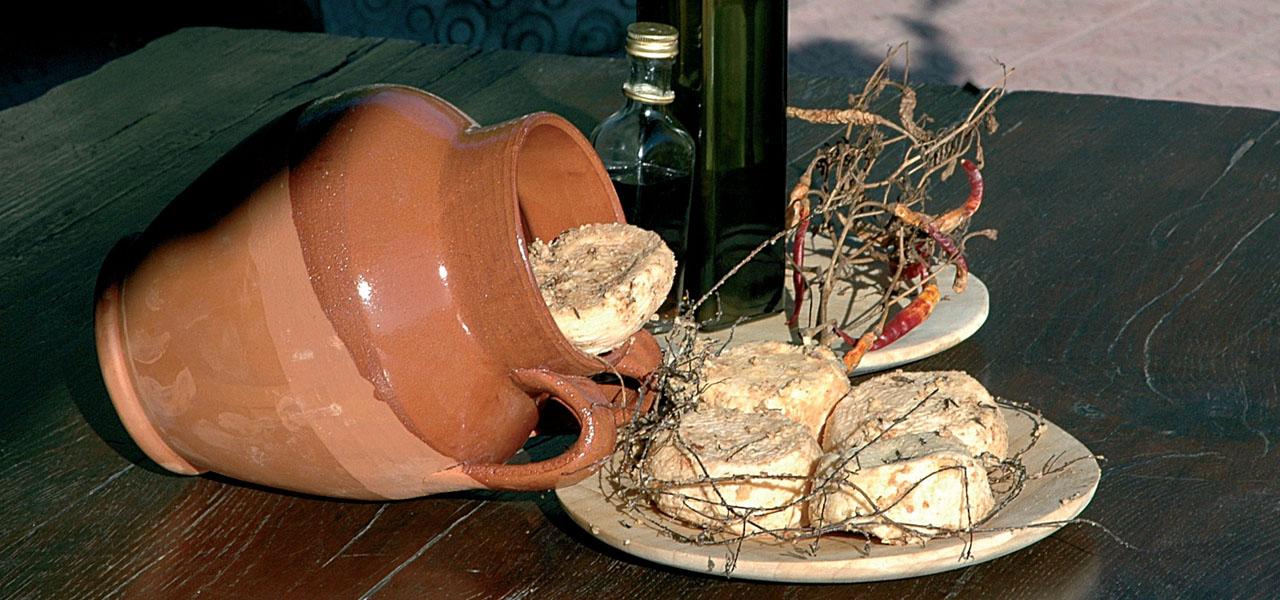Prodotti tradizionali
Caso conzato

Il caso conzato o conciato romano, è un prelibato formaggio dal gusto intenso prodotto da secoli nel Casertano, da antiche aziende della zona di Pontelatone-Castel di Sasso e delle vicine Colline Caiatine. Il suo nome è la deformazione dialettale di "cacio conciato", cioè sottoposto a cure molto laboriose: si produce utilizzando, in proporzioni variabili, latte pecorino, caprino o vaccino, riscaldato a 30–35 gradi, a cui viene aggiunto caglio naturale di capretto. Dopo circa 30 minuti la cagliata viene rotta in granuli delle dimensioni di una nocciola, lasciata depositare, privata del siero, posta nelle fuscelle, i cestini di vimini o plastica per alimenti, e pressata a mano. Le forme così ottenute, di pezzatura medio-piccola (200–400 grammi) vengono salate a mano e lasciate asciugare nel "casale" un'apposita struttura di legno protetta da una zanzariera. In seguito vengono lavate con l'acqua di cottura della pasta fatta in casa (pettole), asciugate e "conciate", ossia "trattate", con un' emulsione di olio d'oliva, aceto di vino menta e timo selvatici. Le forme, infine, si lasciano stagionare in orci di terracotta o di vetro per sei-dodici mesi, durante i quali vengono girate almeno una volta al mese, ripulite dalle muffe che si formano in superficie e trattate di nuovo con l'emulsione di olio, aceto e erbe; i trattamenti conferiscono al formaggio le sue peculiari caratteristiche: la consistenza particolare, il profumo penetrante e persistente, il sapore intenso e aromatico.
Caso conzato or conciato romano, is a luscious cheese that has very ancient origins and a very intense flavour. It is produced in the province of Caserta by few firms in the area of Pontelatone–Castel di Sasso and nearby the Caiatine Hills. Its name is a dialect mutation of "cacio conciato" (treated cheese) because it goes through laborious cures while it matures. It is produced using sheep, goat or cow's milk, in variable proportions, which is heated at 30-35 C and to which is then added natural goat curd. After about 30 minutes the curd is broken in crumbs the size of a hazelnut, it deposits, separate from the whey and placed in the fuscelle, small baskets made of wicker or plastic, and it is then pressed by hand. The forms obtained, of medium-small size (200-400 grams) are salted rubbing the surface and left to dry in the "casale", a wood structure protected by a mosquito net. Then, the forms are washed with the water used to cook homemade pasta ("pettole"), dried and "conciate", that is "treated", with an emulsion of olive oil, wine vinegar, wild thyme and mint leaves. The firms are finally laid to mature in terracotta or glass jars for six-twelve months and turned once a month. During this phase, the forms are cleaned from mould that forms on the surface and treated another time with the emulsion of oil, vinegar and herbs; this particular procedure gives the cheese its peculiar characteristics: a special consistency, a penetrating and persistent scent, an intense and aromatic taste.